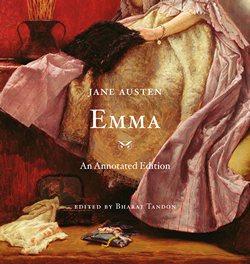For those who have seen a ballroom dance scene in a Jane Austen movie adaptation, or witnessed a group of ladies and gentlemen dressed in Regency finery engaged in a country dance, you know the awe and energy that it generates can be quite thrilling. Then imagine what it would be like in Jane Austen’s... Continue Reading →
Preview of Emma: An Annotated Edition, by Jane Austen, edited by Bharat Tandon & Giveaway!
Holiday book giving is just around the corner, and top on my list to many of my Janeite friends will be Harvard University’s new annotated edition of Jane Austen’s Emma. It will be officially released tomorrow, so mark your calendars and wait for the fireworks. I was agog over their two previous volumes, Pride and... Continue Reading →
Stephanie Barron Featured on NPR
Author, and friend of Austenprose, Stephanie Barron has contributed an online article in the "Three Books" series on NPR. Which books did she choose? Why Regency-era of course. In Three Books, Two Centuries And One English Regency, Barron highlights: Seize the Fire: Heroism, Duty, And Nelson's Battle of Trafalgar, by Adam Nicolson; The Battle: A... Continue Reading →
Suspense and Sensibility or, First Impressions Revisited: A Mr. & Mrs. Darcy Mystery, by Carrie Bebris – A Review
Inspired by characters from Jane Austen’s novels Pride and Prejudice and Sense and Sensibility, the second in the Mr. & Mrs. Darcy mysteries series begins four months after the marriage of Austen’s famous romantic duo, Elizabeth Bennet and Fitzwilliam Darcy. Family obligations take them from Pemberley, their country estate in Derbyshire, to Town to help... Continue Reading →
Jane and the Stillroom Maid: Being a Jane Austen Mystery (Book 5), by Stephanie Barron – A Review
Touring the Derbyshire countryside in the summer of 1806, Jane Austen, her mother, sister Cassandra, and cousin Rev. Edward Cooper are staying at the Rutland Arms in Bakewell, in the Peak District. While on a day excursion out into the country with Mr. Cooper and his friend Mr. Hemming, the gentleman enjoy angling along the... Continue Reading →




